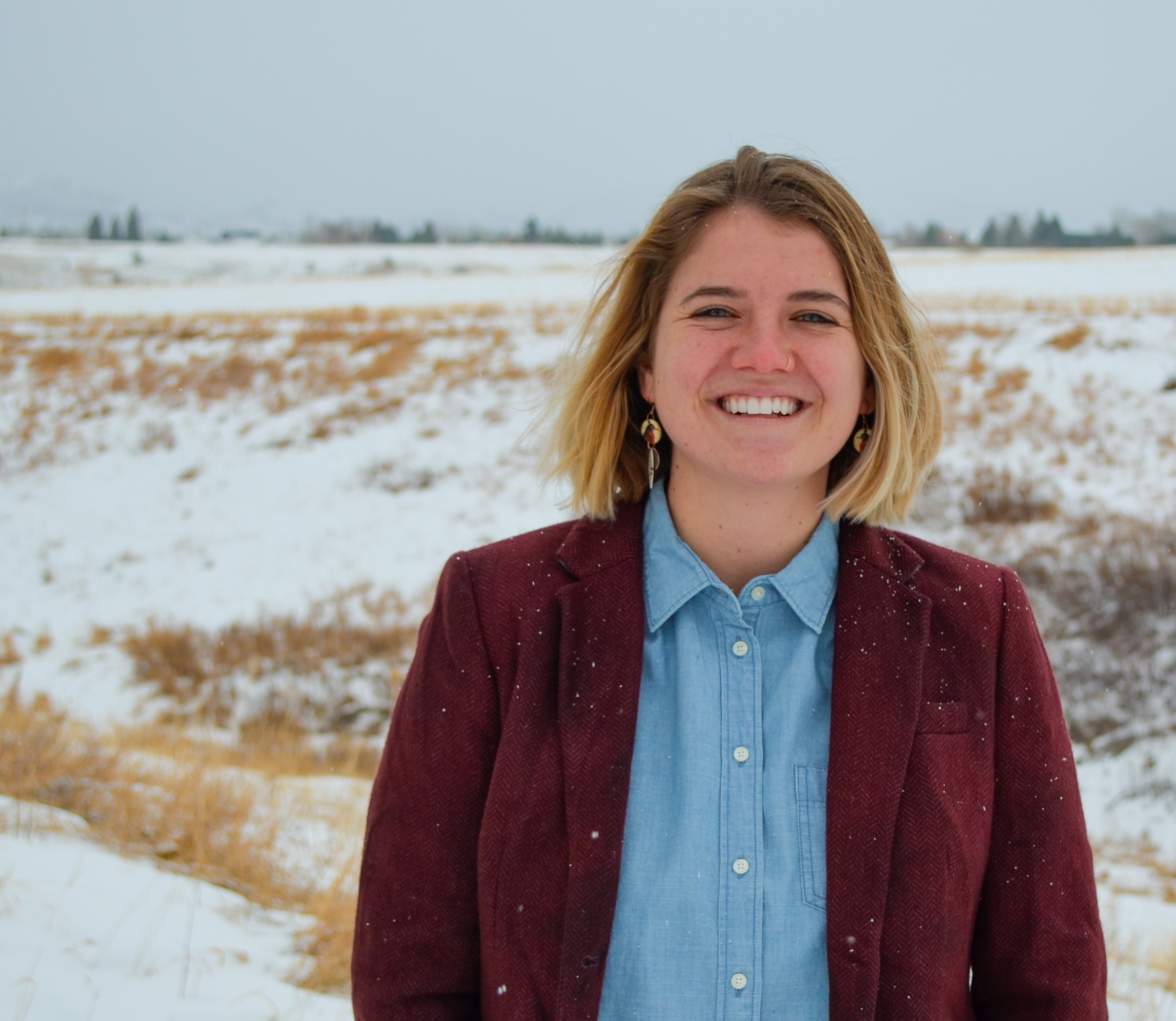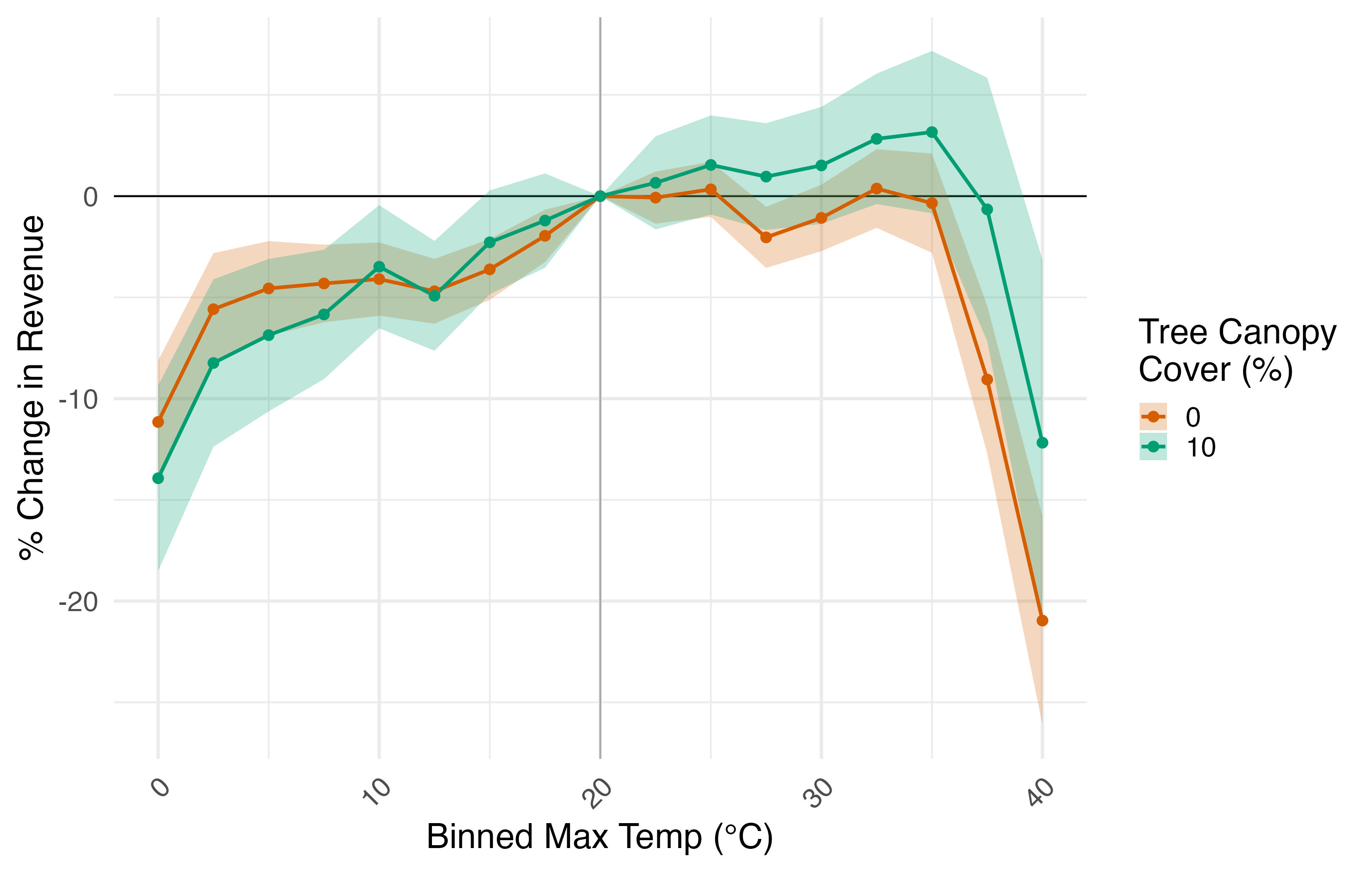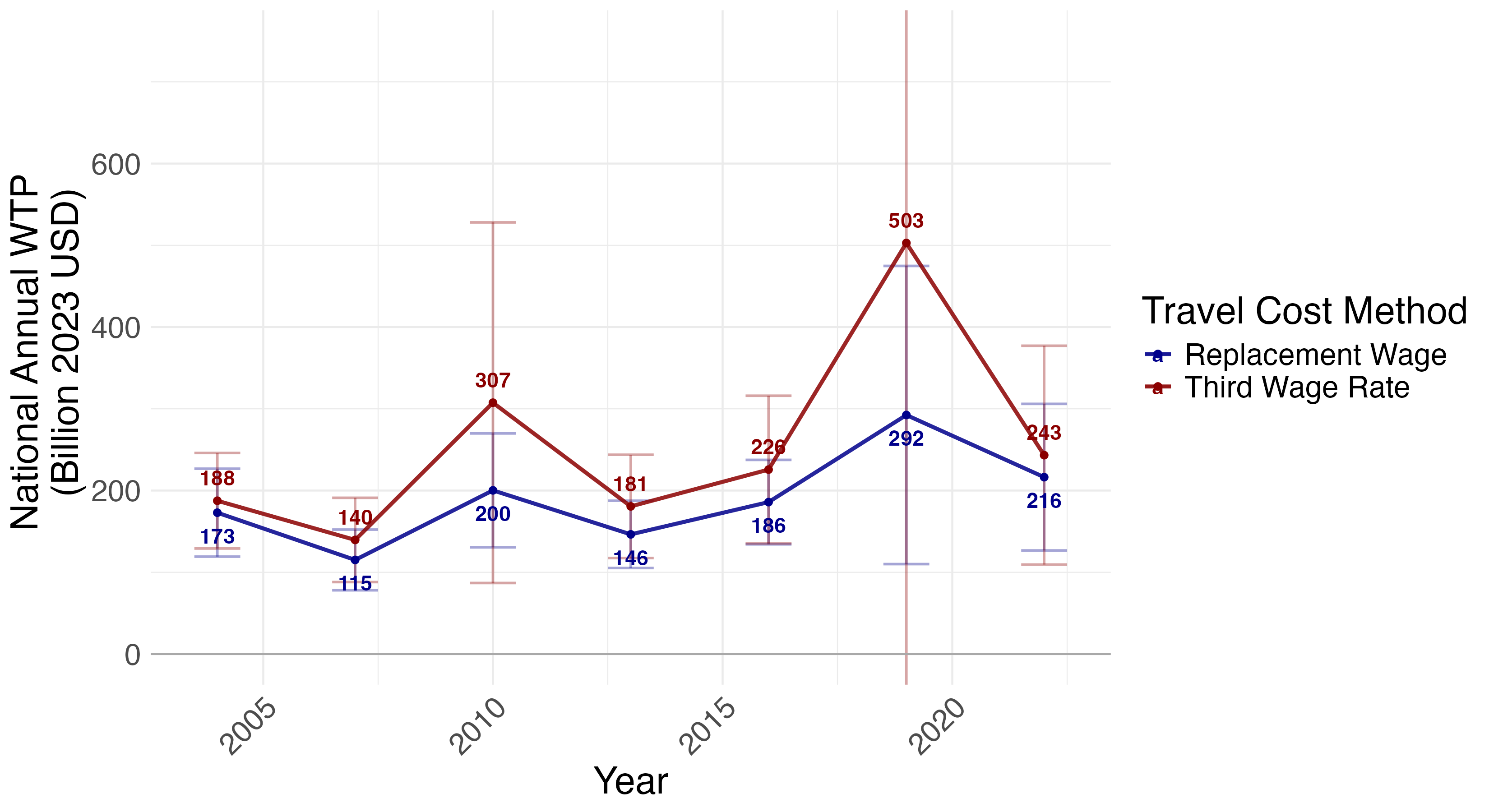
Andie Creel
I am an environmental economist completing my PhD at the Yale School of the Environment. My research estimates the non-market value of nature-based adaptation solutions to climate change, ecosystem services, and biodiversity, with a focus on integrating these values into the systems that measure welfare, business performance, and fiscal health. I combine behavioral data, such as credit card transactions, mobility records, and time-use surveys, with high-resolution environmental data to reveal how natural resources influence well-being and economic outcomes.
I will be on the job market in 2025-2026.
Research
Job Market Paper: The Value of Nature-Based Adaptation – Evidence that Tree Cover Protects Urban Revenue from Heat
[Link to Working Paper.] Climate change is increasing the frequency and intensity of extreme heat events, particularly in cities. This paper estimates the causal effect of temperature on daily revenue using over 15,000 consumer-facing storefronts in the 49 largest U.S. cities between 2019 and 2023. Above 35 °C (95 °F), revenue falls steeply, averaging 9 percent lower on days above 37.5 °C (99.5 °F) days than on 20 °C (68 °F) days. Consumption smoothing across days mitigates some damage from an extreme heat event, but a 1.3 percent revenue drop persists for two weeks following a hot day. Therefore, I estimate how effective urban green space is as a climate adaptation strategy that can prevent revenue losses caused by extreme heat ex ante. I find that a one percent increase in tree cover surrounding a storefront increases revenue by 0.94 percent on hot days. A 10 percent increase in surrounding tree cover eliminates revenue losses at 37.5 °C and reduces them by half at 40 °C, relative to areas without canopy. Storefronts located in the Southwest and South have the most to gain from urban tree cover. On average, businesses in this region can cover the cost of moving to a 10 percent tree cover scenario in four years with the avoided revenue losses. This length of time shortens under projected climate scenarios. These results suggest that green infrastructure can improve firm resilience to heat, providing evidence of a private incentive to finance urban green space that could simultaneously provide a positive externality.

The National Value of Local Outdoor Recreation over the Past 20 Years
[Link to Working Paper.] I measure the benefits of local outdoor recreation in the United States over 2003-2023 and show how conclusions depend on how travel time is priced. Using the American Time Use Survey to estimate a travel-cost model, I estimate (i) welfare-based willingness to pay, which values travel time at one-third of own wage, and (ii) accounting values that price the realized service (travel) at a replacement wage consistent with household production accounts. Average value per trip is stable at roughly $15-$18 (2023 USD) regardless of pricing technique, with temporary increases around the Great Recession and the COVID-19 pandemic. Scaling by trips and population, national annual value rises by about $100 billion over two decades. In 2022, it totals $216-$241 billion, far exceeding typical municipal park investments. In contrast to average and aggregated value, distributional results depend on the modeling choice of how to price time. While aggregate time trends are similar under both approaches, using a replacement wage compresses the richest-to-poorest quintile ratio in per-trip value from about 10:1 to 1.5:1. The method produces a scalable, repeatable measure of local recreation benefits and connects non-market valuation with accounting-consistent pricing.
